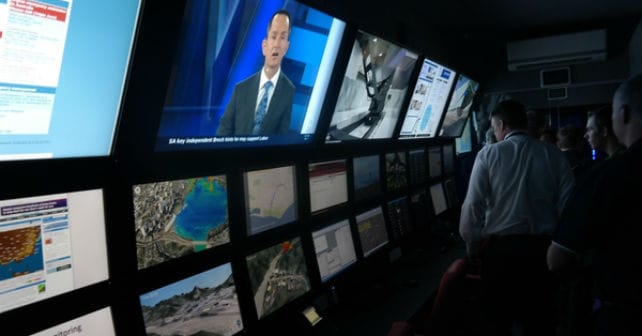Emergency response vehicle puts IoT on wheels

Australia’s National Safety Agency has developed a prototype emergency response vehicle equipped with multi-channel communications capabilities, real-time video and more than 30 screens for monitoring weather, incoming images from emergency responders and other critical data.
Designed with support from Cisco, the ESIC (for “Emergency Services Integrated Communications”) vehicle serves as a mobile command center that can intelligently link all agencies involved in an emergency situation.
“The internet of everything brings together people, process, data and things to make networked connections more relevant and valuable than ever before,” said Ken Boal, vice president of Cisco Australia and New Zealand. “The National Safety Agency’s Emergency Services Integrated Communications vehicle is a phenomenal showcase of how public safety can significantly improve the real-time flow of information through a mobile command and communications center to allow better informed decisions to be made more quickly and ultimately lead to safer Australian communities.”
Designed to be deployed in response to fires, floods, cyclones, tsunamis, marine pollution, terrorist events or large crowd gatherings, the ESIC vehicle can be fully operational within 15 minutes of arriving at a site.
The vehicle’s technologies allow responders with two-way radios to communicate and video-conference with people at other locations using devices ranging from mobile phones and regular telephones to computers and tablets. The vehicle is also equipped by day/night video cameras that can transmit interior and exterior images to response teams, and features multiple video screens for displaying hydrology data, weather location information, real-time images from responders’ helmet-mounted cameras and other information.
The National Safety Agency, a not-for-profit organization that researches and develops emergency-response solutions, is also exploring the possibility of adding capabilities for unmanned aerial vehicle (drone) operations, Google Glass technology, on-site triage of disaster victims and body-held cameras with integrated sensors for blood pressure and breath monitoring.
“The ESIC vehicle showcases technology in an operational context to inspire and assist with the creation of a vision for the public safety sector and other industries with emergency management responsibilities, such as the mining industry,” said Des Bahr, chair of the National Safety Agency.
The ESIC vehicle was unveiled during the Cisco Live event taking place in Melbourne, Australia, this week.




